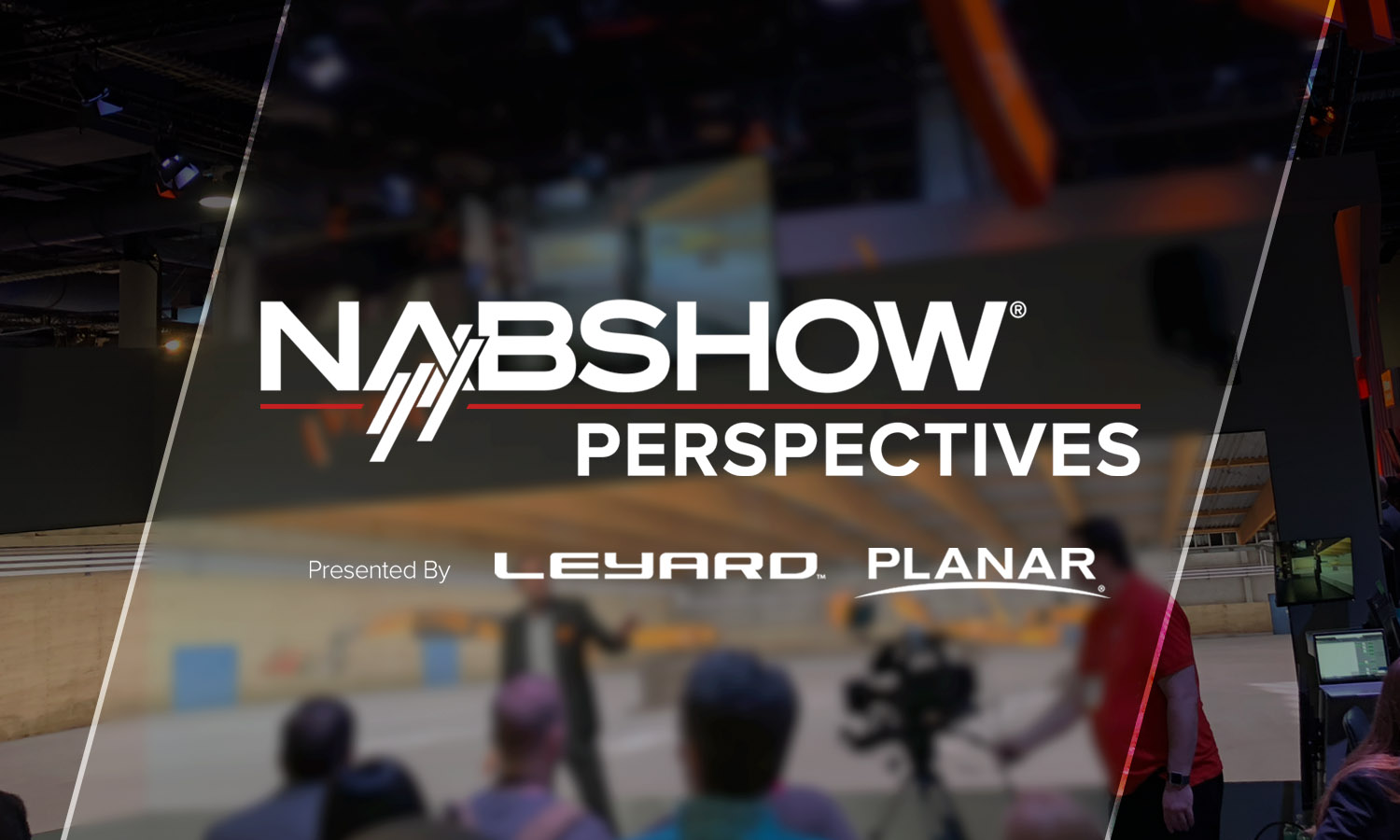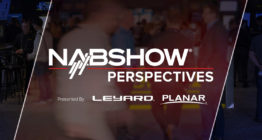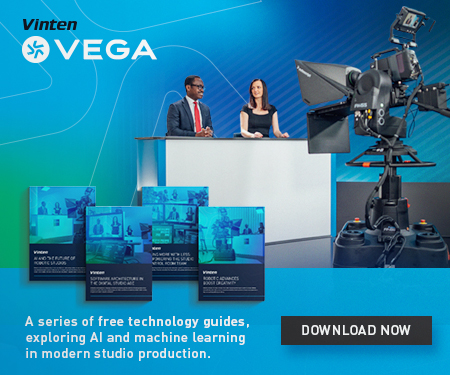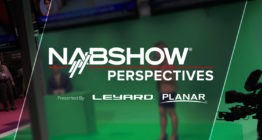NAB Show Perspectives: What is the biggest engineering challenge today?

Subscribe to NewscastStudio for the latest news, project case studies and product announcements in broadcast technology, creative design and engineering delivered to your inbox.
In the third installment of our NAB Show Perspectives roundtable series, part of our NAB Show Central coverage, we ask what broadcast engineering challenges are present in the industry today.
As with our previous posts, the panel is made up of a large cross-section of broadcasting industry vendors touching all parts of production and engineering.
“Producing and distributing content more economically. As audiences migrate online, there is certainly the ability to better target users but the dollar amounts simply aren’t the same. Bringing the unit economics in line with the revenue potential of “online” delivery is a significant engineering challenge,” said Jonathan Huberman, CEO of Ooyala.
“The biggest engineering challenge now, and always is: How to make the most sophisticated, reliable and adaptable solutions that will operate 24×7 for many years with a return on investment which is achievable, and fast. It’s a constant challenge to any company hoping to stay at the forefront of their field,” said James Eddershaw, managing director at Shotoku Broadcast Systems.
“Bandwidth is an ongoing challenge with remote productions. With the need to deliver multiple feeds, production workflows need to be adapted in order to more efficiently utilize and manage resources on site. In addition, IP protocol standardization will continue to be a challenge. There has been a lot of general talk about standardization, but nothing has yet to be widely adopted,” said Jonathan Aroesty, president of Pronology.
“Engineering departments have to become strategic thinkers. They need to understand their mission no longer is about moving content from one location to another in the right format. It is about designing and delivering the platform that will support the operations and their continuous transformation to sustain the executive strategy and vision,” said Arnaud Elnecave, VP of marketing for Dalet Digital Media Systems. “Moving one level lower, this means designing and implementing a cohesive and consistent content chain, connecting an ecosystem of applications and infrastructure that provides the right level of agility, scalability, responsiveness, collaboration. The most strategic challenge in this transition is data. Getting the design of their data models and date pipelines right or wrong sets, the path for success or failure and speed of execution.”
“One, agreeing standards that let all video, audio and intercom systems play well with each other in a single local or wide area IT network. Two, the high-quality IT infrastructure required for the broadcast plant, the know-how to specify, design, deploy and maintain it. Three, engineering IP based systems to provide reliability compared to conventional systems,” said Simon Browne, VP of product management for Clear-Com.
“Data management and distribution is literally huge. There is so much data beyond audio, video, and captioning. Broadcasters can do so much with metadata, but it has to be managed so every clip that is stored is accessible. Engineers also need to be able to take those assets and distribute them in various formats for various viewing platforms,” said Craig Yanagi, national marketing manager, JVC Professional Video.
“For many broadcasters, it’s figuring out the eventual transition to 8K and how to plan for it based on their current workflows and nearer-term investments. Just like Ultra HD 4K, 8K is on the horizon and will inevitably be here before we know it, as it’s already a reality for the NHK,” said Bob Caniglia, director of sales operations in North America for Blackmagic Design. “Broadcasters need to think about investing in technology that will support them through the transition by allowing them to work in HD and Ultra HD now, but that also future proofs their workflows by offering 8K capabilities for the future.”
“The overall business environment is very strong. Managing and staffing a growing engineering team takes cycles. A software company can never have enough engineers,” said Rick Clarkson, chief strategy officer for Signiant.


Attending the 2019 NAB Show? Register today for free and save $100 off the Conference Flex Pass or Post Production World registration. Just use code MP01.
“The biggest challenge is creating a low latency pipeline that goes from video ingest and encoding, through the cloud, and all the way to the player. This requires a tremendous amount of cooperation with each link in the live video chain to meet the low latency requirements without reducing the quality of the delivered video,” said Josh Cetnar, business development specialist at Videon Central, Inc.
“Getting upstream in the content creation process is an area of opportunity (rather than challenge) to make a difference and help influence downstream distribution, monetization, and analytics opportunities. The biggest engineering challenge, though, is that many pre- and postproduction solutions are on closed networks, so you can’t easily move hi-res or even proxy files quickly to cloud solutions for AI cognitive processing,” said Ryan Steelberg, president of Veritone, Inc. “Having content in a cloud infrastructure where a customer can take advantage of the platform is key.”
“Broadcasters want to move to IP, but SMPTE 2110 is difficult to deploy and expensive, so it’s not suited for many broadcasters in North America and even less suited for broadcasters in other parts of the world. Short-term that means looking at staying with SDI, which isn’t future-proof, or looking at deployments with other IP technology, such as NDI,” said Brian Olson, VP of product management at NewTek.
“One technical challenge will be for all the equipment companies implementing ST 2110-compliant equipment to maintain the maximum possible interoperability while providing desirable network functionality for broadcasters. Ideally, the open, standards-based environment will let users network nearly all the elements of their systems, using products from a variety of standards-compliant manufacturers. However, the audio standard adopted under ST 2110 is AES67, which does not provide for some desirable functions in an AoIP network, such as device start/stop, monitor mutes, on-air tallies, and the ability to control peripherals from the console, among others,” said John Schur, president of The Telos Alliance TV Solutions. “Telos Alliance’s Livewire+ AES67 is completely AES67 compliant but it goes beyond AES67’s audio interoperability to add GPIO Control, advertising/discovery, and program associated data (PAD) in order to provide the additional desired network functionality. Going forward, if every manufacturer can strike the right balance of standards compliance and feature-rich functionality, then the industry at large will gain the most benefits from these new standards.”
“Creating tools that allow for the hyper-proliferation of content, including multi-site cloud aggregation and integration with AI services, and the simplification of tools to interact, edit, and manage all of this content,” said David Colantuoni, senior director of product management for Avid.
“Centralization is a huge challenge in broadcast engineering. This of course is vital when mergers take place, but in terms of creating more efficient workflows and maintaining control over content distribution, every broadcaster is working on this. Coming up with the right technology to facilitate centralization and the right soft skills, ie creating working relationships between headquarters and individual stations, is a tough challenge,” said Vernon Freedlander, head of strategic partnerships at Bannister Lake Software.
[nab-2019]
Subscribe to NewscastStudio for the latest news, project case studies and product announcements in broadcast technology, creative design and engineering delivered to your inbox.





tags
4K Production, 4K Television, 8K, 8K Production, Arnaud Elnecave, Automation, Bob Caniglia, Brian Olson, Broadcast Automation, Broadcast Engineering, Broadcast Monetization, Centralization, cloud, Craig Yanagi, David Colantuoni, John Schur, Jonathan Aroesty, Jonathan Huberman, Josh Cetnar, live streaming, NAB Show 2019, NAB Show News, NAB Show Perspectives, Rick Clarkson, Ryan Steelberg, Shotoku Broadcast Systems, Simon Browne, SMPTE, SMPTE ST 2110, streaming, Vernon Freedlander
categories
Broadcast Automation, Broadcast Engineering News, Broadcast Industry News, Content Delivery and Storage, Heroes, IP Based Production, NAB Show